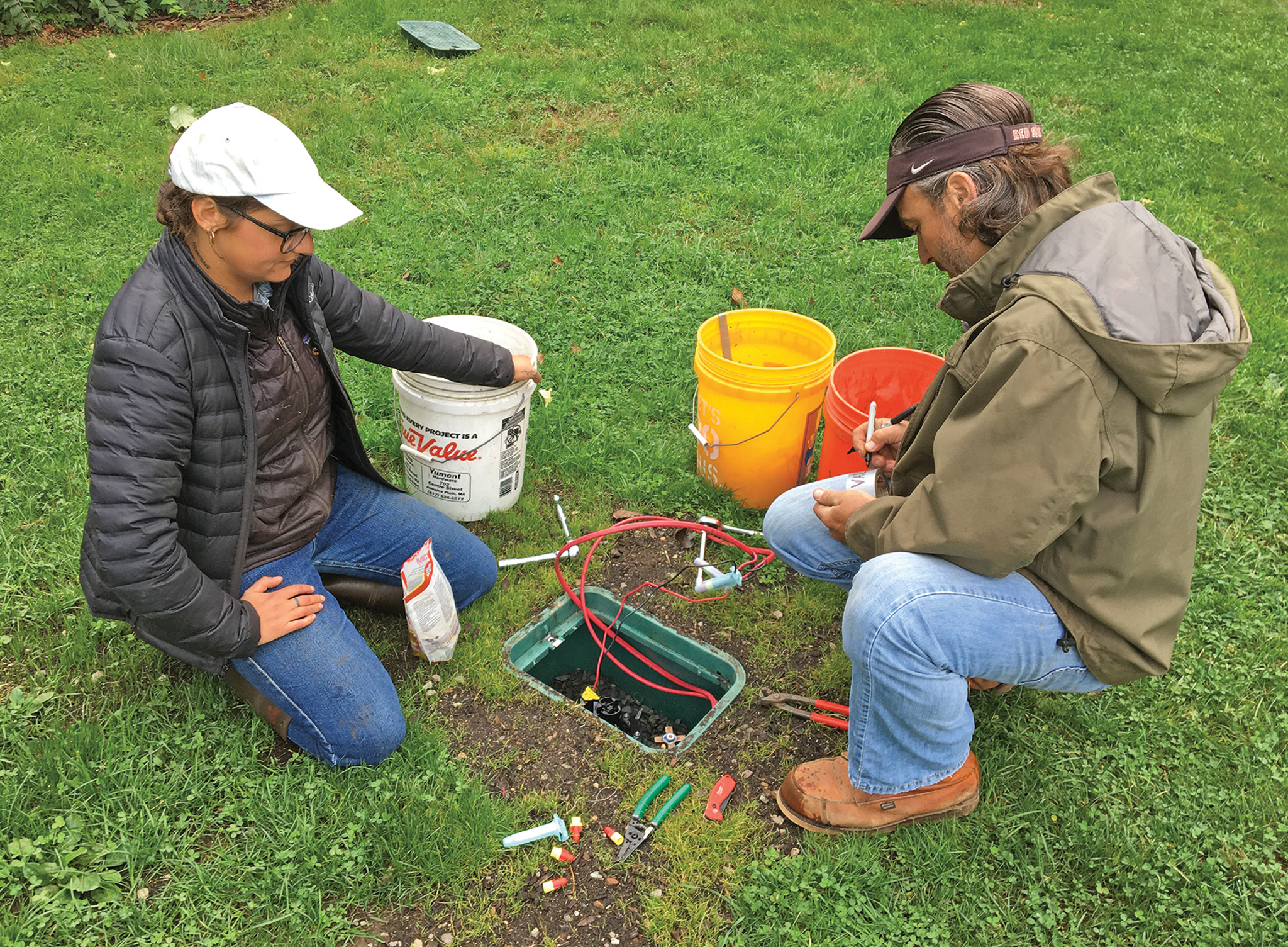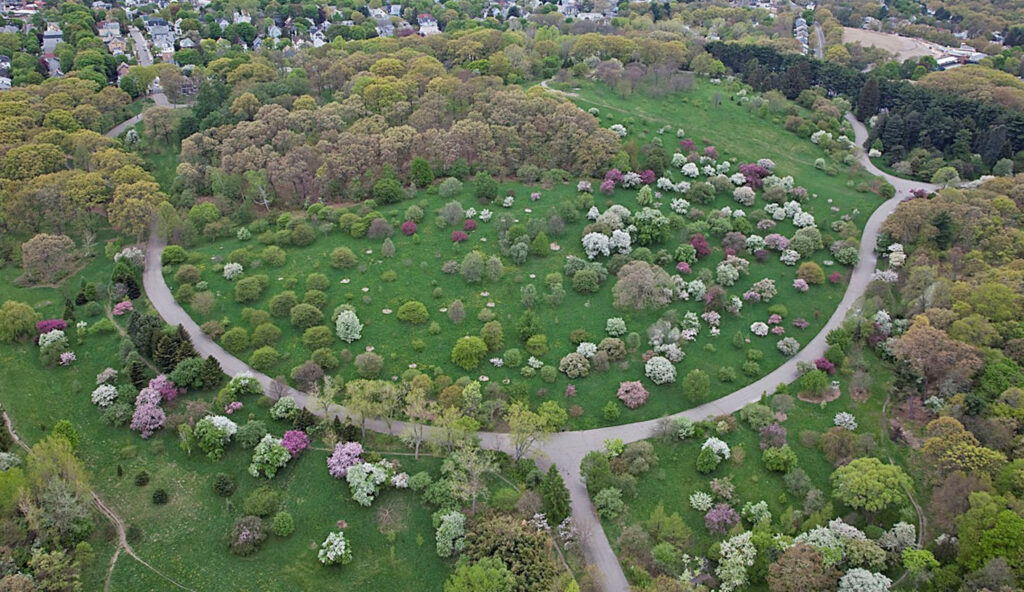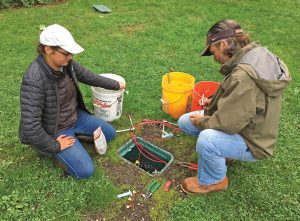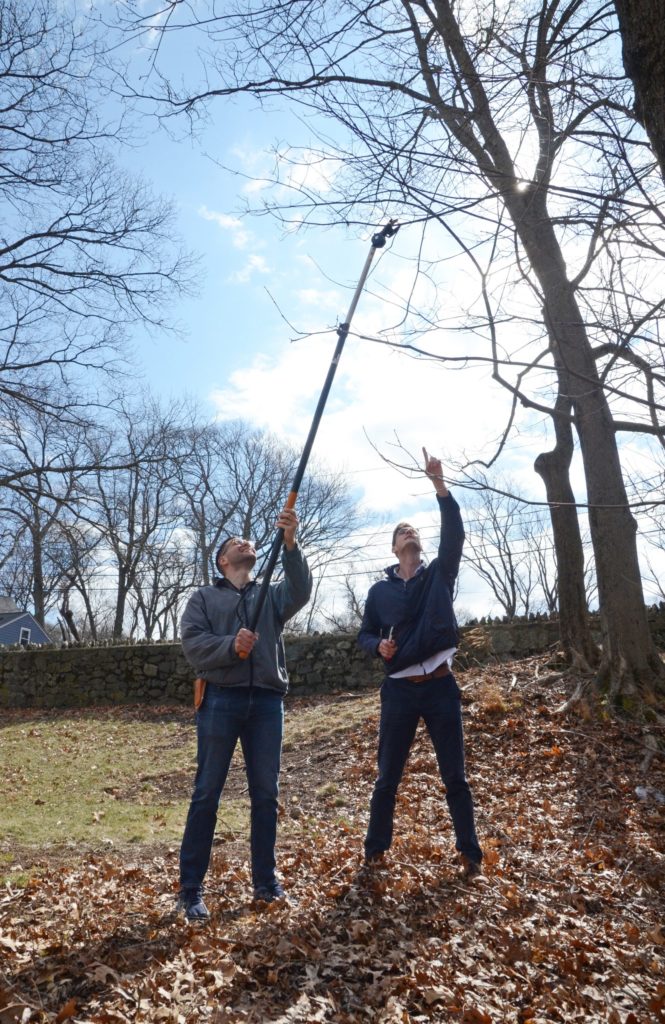Plants require water to survive. Drought makes plants more vulnerable to pests and pathogens. In 2016, the Arnold Arboretum experienced a record-breaking high temperature season. This drought episode lasted for eleven weeks. A considerable number of trees died or required removal. The impacts of prolonged drought require significant attention from our horticultural staff. 2020 and 2022 also brought historic drought conditions to the Northeast not seen since the 1960s. We expect climate change to cause hotter temperatures in New England over the coming decade, making prolonged droughts more frequent. We are concerned with the consequences that increasing pressures of drought will have on the health of our living collections.
Manual watering practices involve transport of heavy hose and water equipment across the grounds. These practices contribute to soil compaction and unnecessary carbon emissions. The practice of hand watering during the daytime is ineffective because of the loss of water due to evaporation. In 2015, we reviewed our strategy for preparing our living collections for the challenges of climate change. Our long-term strategy involves increasing water access, building out of automated irrigation systems in high-priority collections, and improving overall water infrastructure and irrigation systems to increase water use efficiency.

Centre Street Irrigation Project (Phase One, 2019-2021)
In 2019, we completed the first phase of a large-scale initiative to improve our response to drought with the Centre Street Gate Project. This donor-funded project includes automated irrigation across 30 acres of plant collections, and water access to another 17 acres. This covers our oak collection, viburnum collection, Explorers Garden, hickory collection, and birch collection. From 2021 through 2023, we expanded the Centre Street system with thousands of feet of irrigation, providing additional water connections and sprinkler capacity throughout the conifer, hickory, birch, ash, elm, and Oriental oak collections, extending the reach of the system to over 4,200 plants.
These new, automated irrigation systems help alleviate the detrimental effects of manual watering practices. Our systems water at night to minimize water loss in the day from evaporation and reduce the amounts of soil compaction and fossil fuel emissions caused by watering vehicles and manual watering.
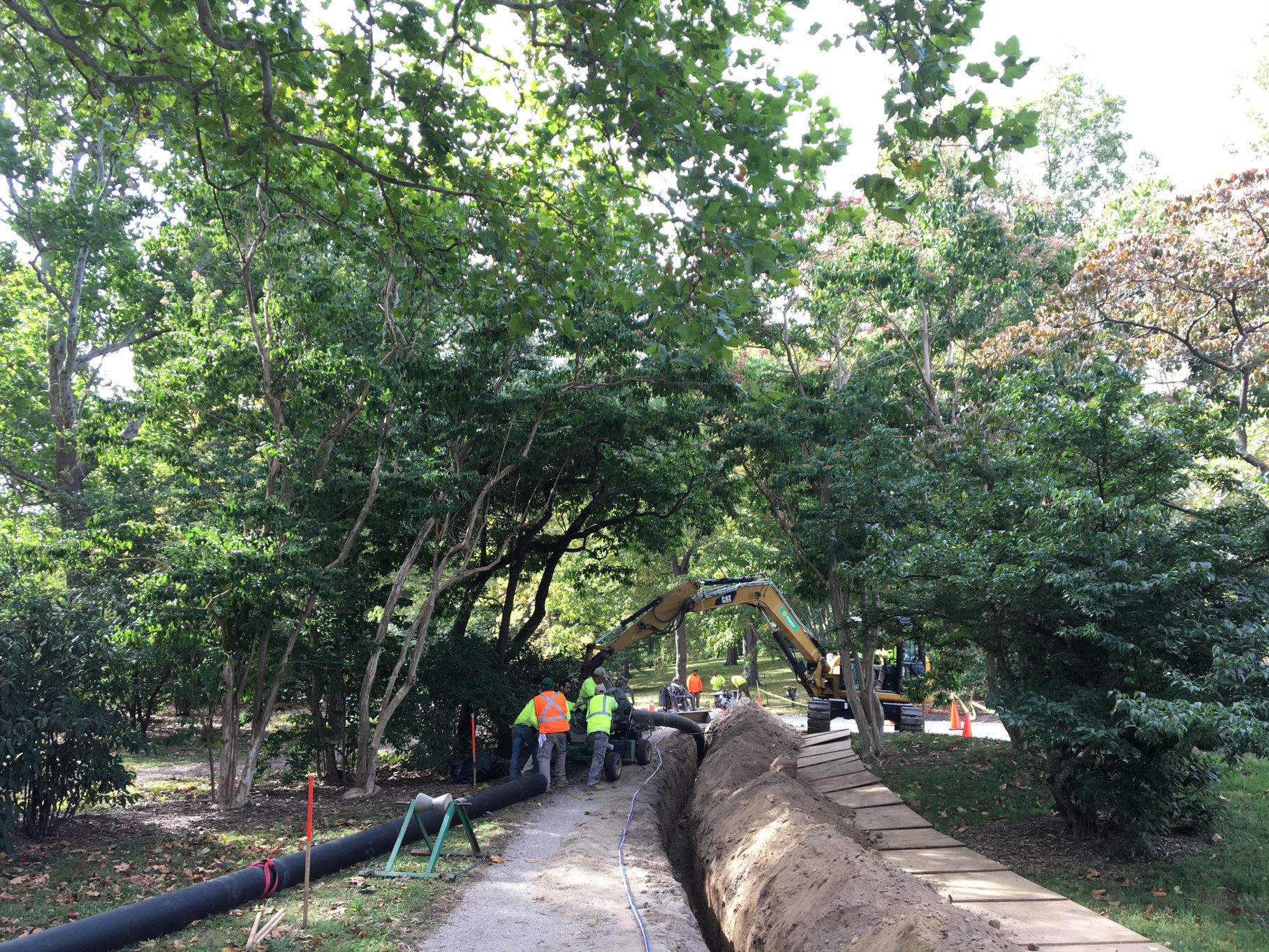


Peters Hill Irrigation Project (Phase Two, 2021-2023)
Moving forward from the first phase of our large-scale drought preparation initiative, we will continue to upgrade water infrastructure across our grounds for improving water accessibility and conservation.
Phase Two brings water access to over 55 acres and more than 2,700 accessions on Peters Hill—the area least accessible to sources of water in the Arboretum. Among these organisms are the Arboretum’s ginkgo collection, nationally accredited by the Plant Collections Network and holding the greatest genetic diversity of any collection of wild collected ginkgoes in the world. Two other high-value collections that stand to benefit from this new system, the crabapples and hawthorns (a favorite of the Arboretum’s founder and first director, Charles Sprague Sargent), provide year-round interest and draw thousands of visitors each spring with their showy blossoms. Atop the Peters Hill summit, the honey locust collection includes dozens of majestic specimens, adorned in brilliant gold each October.
Due to the varied terrain and elevation of the tract, transporting and deploying supplemental water throughout the entirety of this area requires the use of electrical booster pumps. Instead of utilizing expensive and unsightly above-ground structures in the historical landscape, the Arboretum retrofitted and soundproofed the concrete garage of its property at 163 Walter Street to hold a new 4” water service, three-phase electrical service, and pumping station.
We completed construction and commissioning of the Phase Two system in November 2023.
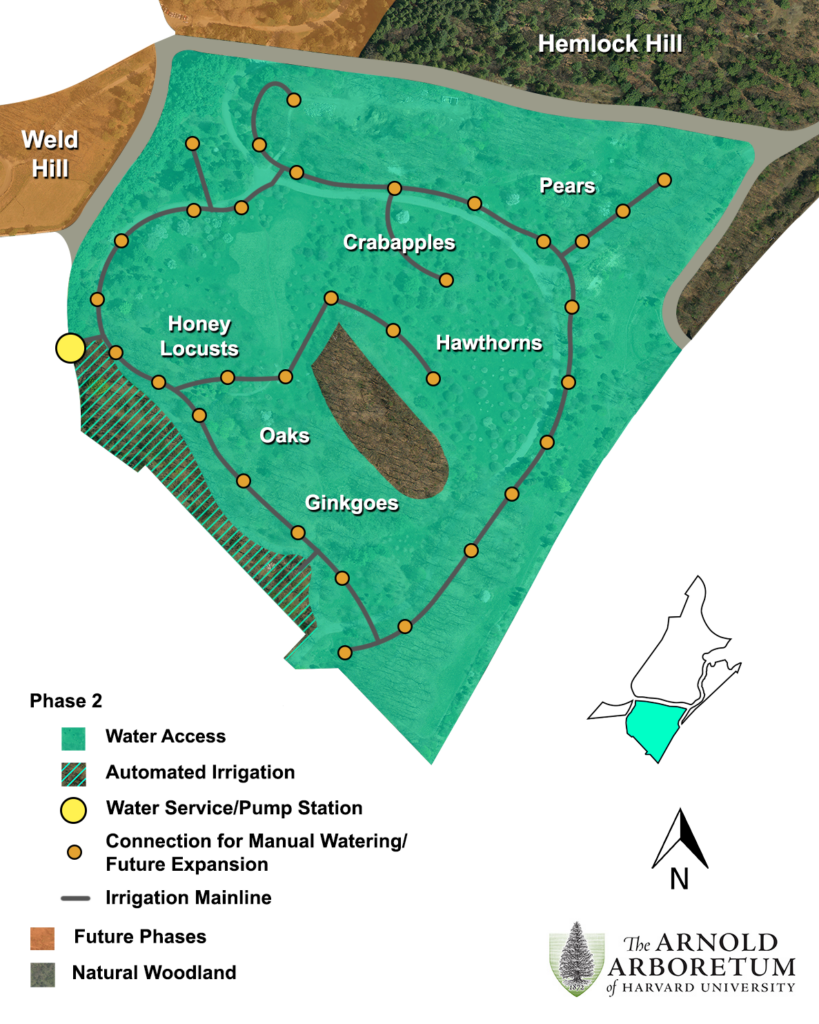
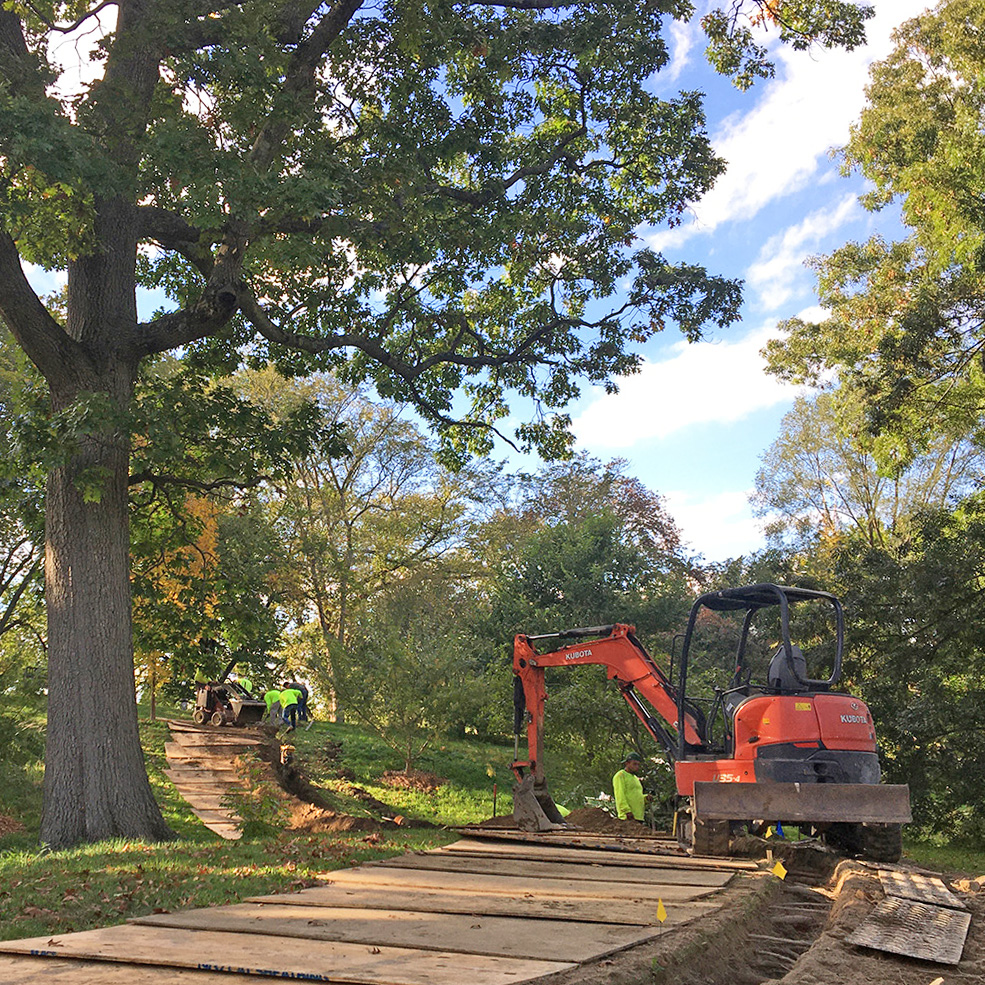

Meadow Road Irrigation Project (Phase Three, 2024-2027)
Construction of Phase 3 began in July 2025. This phase involves collaboration with leading irrigation and civil engineering experts, as well as consultants from Harvard Capital Projects. The scope includes:
- Upgraded Water Service: Phase 3 will include replacing the aging domestic water service to the Dana Greenhouse with a new, upsized water service from Boston Water & Sewer.
- Plumbing Redesign: The plumbing supply and distribution inside the Dana Greenhouse Building will be redesigned to simplify the system, reduce expenditures by abating unnecessary sewer charges, and create a more reliable system for watering our greenhouses, nurseries, and irrigation systems within the landscape.
- Utilizing Phase 2 Infrastructure: This phase will capitalize on the capacity of the Phase 2 pump station on Peters Hill, bringing water across Flora Way and into the collections along Hemlock Hill Road.
Protection of Key Collections: Phase 3 will focus on protecting 60 acres of treasured collections along Hemlock Hill Road and Meadow Road. This includes our nationally accredited collections of maples, hemlocks, and beeches; cork trees, lindens, horse chestnuts, tulip trees; and the azaleas, rhododendrons, and mountain laurels at the foot of Hemlock Hill.
With the completion of Phase 3, anticipated in early 2027, the Arnold Arboretum will have a comprehensive irrigation system in place, allowing all parts of the Arboretum to be watered either with in-ground or portable irrigation. This will significantly enhance our ability to maintain the health and resilience of our collections during periods of extreme drought.
Related Articles
We are thankful for the donors who have supported the Arboretum Drought Preparedness Initiative. If you are interested in supporting the Arnold Arboretum’s future sustainability initiatives, please check our Support Page.
